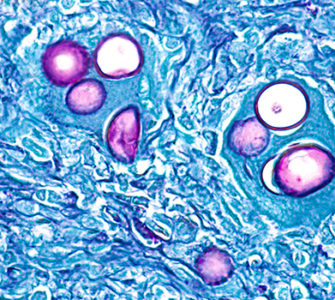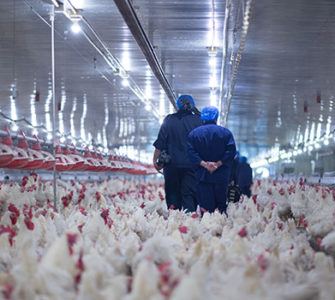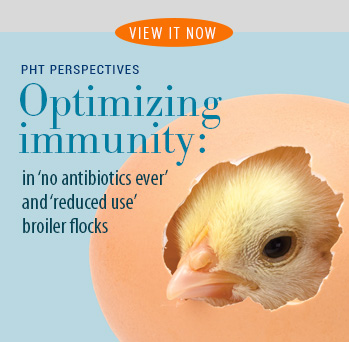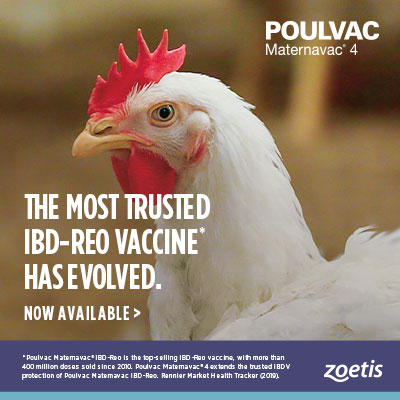Planning anticoccidial rotation strategies: Consider the consequences
By
Dieter Vancraeynest, DVM, PhD
Zoetis
dieter.vancraeynest@zoetis.com
Anticoccidial rotation strategies help reduce the health and economic impact of coccidiosis, while preserving the efficacy of the limited range of tools available for managing it. The most important consideration when planning a rotation program is expected efficacy in view of the farm’s individual needs. However, each tool has other attributes that may have further consequences for flock health. When planning a coccidiosis-management program, producers should take these properties into account to maximize the program’s benefits and minimize its risks.
Keeping anticoccidials effective
Coccidiosis remains the leading cause of intestinal problems in poultry production worldwide. A recent report found that coccidiosis costs the global poultry industry an estimated $2.4 billion annually due to production losses, as well as prevention and treatment costs.1
The disease most often presents subclinically, characterized by few external symptoms but potentially significant reductions in weight gain and feed efficiency. It’s virtually impossible to eliminate coccidia from the poultry environment, so the goal of rotation strategies is to minimize the disease’s economic impact, while using anticoccidials responsibly to guard against resistance.
There are different types of rotation strategies. In “shuttle” programs, one in-feed anticoccidial is used in the starter feed and another in the grower/finisher feed until it’s time to withdraw the drug in preparation for marketing. In “full” programs, the same in-feed anticoccidial is used in the same flock from day 1 until withdrawal and is changed — or rotated — approximately every 3 to 6 months.
Consider the consequences
Tools for managing coccidiosis fall into three main categories: ionophores, non-ionophore anticoccidials (sometimes referred to as synthetics) and vaccines. The key to maintaining efficacy is to change anticoccidial categories with each product rotation. But how do we know which product to use from each category — and when?
The answer to this question primarily depends on what’s likely to be most effective based on a poultry producer’s individual needs and history. Once this is established, secondary properties associated with each anticoccidial should be considered to minimize potential risks, especially at certain times of year.
With ionophores — such as monensin, lasalocid and salinomycin — antibiotic compatibility is an important factor. For example, monensin, narasin and salinomycin are incompatible with tiamulin, an antibiotic that is used in poultry to treat Mycoplasma and Brachyspira infections.2
Climate and seasonal factors
Climate and season are other key considerations. Monensin, for instance, is known to reduce water intake, which can have a negative impact on feed intake.3 For this reason, it’s best to avoid monensin during warmer months, when adequate water intake is needed for optimal performance. Instead, producers can cover the entire year by reserving monensin for the winter and in summer switching to lasalocid, which is not associated with reduced water intake and is therefore a better option in warm weather.
Temperatures should also be taken into account with non-ionophore anticoccidials (NIAs), also known as synthetics. For example, nicarbazin is strongly associated with heat stress, especially at the high dose.4 Heat stress is linked to increased and sometimes significant mortalities, so nicarbazin is best reserved for use during colder months. Robenidine, decoquinate, zoalene and diclazuril are not known to cause heat stress and are therefore more suitable for use in warmer climates.
Meanwhile, vaccines are helpful in restoring the efficacy of NIAs and ionophores but should also be timed carefully. Oocyst-based live vaccines induce a mild and controlled Eimeria infection that increases risk of bacterial enteritis. It’s therefore better to use vaccines at warmer times of year — when disease pressure is lower and litter quality is better due to higher temperatures and lower humidity.
Other considerations
A carefully designed rotation strategy is an essential component of any coccidiosis-management program but not the only one. Precise and uniform feed mixing is necessary to ensure birds receive the proper dose of in-feed anticoccidials. Adequate nutrition is also critical, and as with all health and production issues, good management and biosecurity are paramount.
Hygiene and ventilation are particularly important to maintaining good litter quality, which is essential to effective coccidiosis control. Litter should be kept as dry as possible, so leaking drinking equipment should be checked regularly and kept in good working order.
In summary, coccidiosis-management programs consist of many different components, each of which may have important consequences for flock health and performance. With foresight and careful planning, however — including a rotation strategy that aims to maximize the benefits of anticoccidials and minimize their potential risks — these consequences can be overwhelmingly positive.
1. Quiroz-Castaneda R, et al. Control of Avian Coccidiosis: Future and Present Natural Alternatives. BioMed Res. Int. 2015;2015:430610. doi:10.1155/2015/430610.
2. https://www.ncbi.nlm.nih.gov/pubmed/19834086
3. https://www.ncbi.nlm.nih.gov/pubmed/40010780
4. https://www.ncbi.nlm.nih.gov/pubmed/28339759
Editor’s note: The opinions and advice presented in this article belong to the author and, as such, are presented here as points of view, not specific recommendations by Poultry Health Today.
Posted on January 25, 2018

















